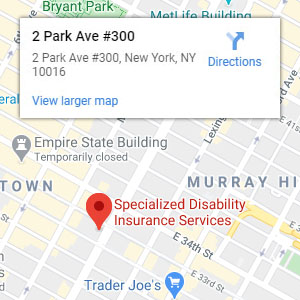Are men and women physicians different? When it comes to individual disability insurance, insurance carriers treat them differently. Many women physicians feel this is unfair and are frustrated by the fact that their rates can be significantly higher.
What Female Physicians Need To Know Regarding Disability Insurance.
1. Females have a higher risk of claims.
When groups of physicians were surveyed, they tended to believe that men have a higher risk of becoming disabled and filing a disability claim. It turns out this is not the case. According to data, the Bureau of Labor Statistics reports that women are more likely to be disabled than men. While they are more likely to become disabled, reports also show they take longer to recover and return to work.
Some of the most common disability claims include medical conditions such as arthritis and rheumatism. Additional claims include medical issues involving, heart disease, cancer, mental health, diabetes, and nervous system disorders. According to data from Integrated Benefits Institute, Health and Productivity Benchmarking 2016, pregnancies are the cause of 9.4% of total long-term disability claims.
2. Pregnancies can lead to claims and result in exclusions in coverage.
Long term disability policies do not provide coverage for normal pregnancies. Though pregnancy itself is not a disability, any associated complications preventing you from working could be considered as a disability. It is important to be aware of the elimination period in your policy. The elimination period is the amount of days you must be out of work, or with a loss of income, as a result of an injury or illness. Long term disability coverage generally has a 60-day, 90-day, or 180-day elimination period.
Pregnancy is a huge milestone in any woman’s life, and it can lead to changes in health and/or new medical evaluations. When looking to secure disability coverage, any new medical conditions or changes in weight can lead to additional exclusions and higher rates.
If you apply for coverage while pregnant, or after a high-risk pregnancy, your policy will likely contain an exclusion for future pregnancies and associated complications. It is extremely advantageous for women to secure coverage before becoming pregnant.
If you are pregnant and do not have coverage yet, it is not wise to delay in obtaining coverage. During maternity leave you are not eligible to purchase disability. You will not be able to purchase until you return to work, performing all your previous job duties. Delaying can leave you at risk. Ultimately, it is very wise to get educated and consider your coverage options as early as you can.
3. The insurance companies that are best for women
Bottom line, since insurance companies have data showing females are more likely to have a claim and the claims statistically last longer, their premiums are higher. Depending on age, female physicians generally pay 25-35% more than their male colleagues. Certain insurance carriers and discount programs can be very attractive and beneficial for women.
For example, this chart shows the difference between male and female rates.
| Monthly premium for a $5,000 monthly benefit at: | ||||
| Gender | Age 30 | Age 35 | Age 40 | Age 45 |
|---|---|---|---|---|
| Male | $136.68 | $156.06 | $206.02 | $253.31 |
| Female | $217.00 | $235.51 | $290.72 | $337.75 |
*Rates shown are for Principals HH750 product in NY. The rates are for a 5A-M occ class with own occupation, residual rider, 90 day elimination period and age 65 benefit period included. Discounts not included.
This chart shows the same coverage as above with gender neutral, discounted rates.
| Monthly premium for a $5,000 monthly benefit at: | ||||
| Gender | Age 30 | Age 35 | Age 40 | Age 45 |
|---|---|---|---|---|
| Gender Neutral | $118.93 | $134.40 | $175.04 | $212.77 |
*Rates shown are for Principals HH750 product in NY. The rates are for a 5A-M occ class with own occupation, residual rider, 90 day elimination period and age 65 benefit period included.
A Gender-Neutral discount is when an insurance company blends rates for males and females to provide one rate. Discount programs that contain gender-neutral rates, sometimes also known as unisex rates, can result in savings up to 40% for women. In order to set up a discount like this, you need 3-5 people from the same employer to apply at the same time. Once the program is established, it can be used by anyone with an affiliation to that employer.
Currently, Specialized DIS has over 400 gender-neutral programs set up across the country. Most of these programs are with hospitals, universities, and large physician employer groups. Our strategic approach is sure to help you.

